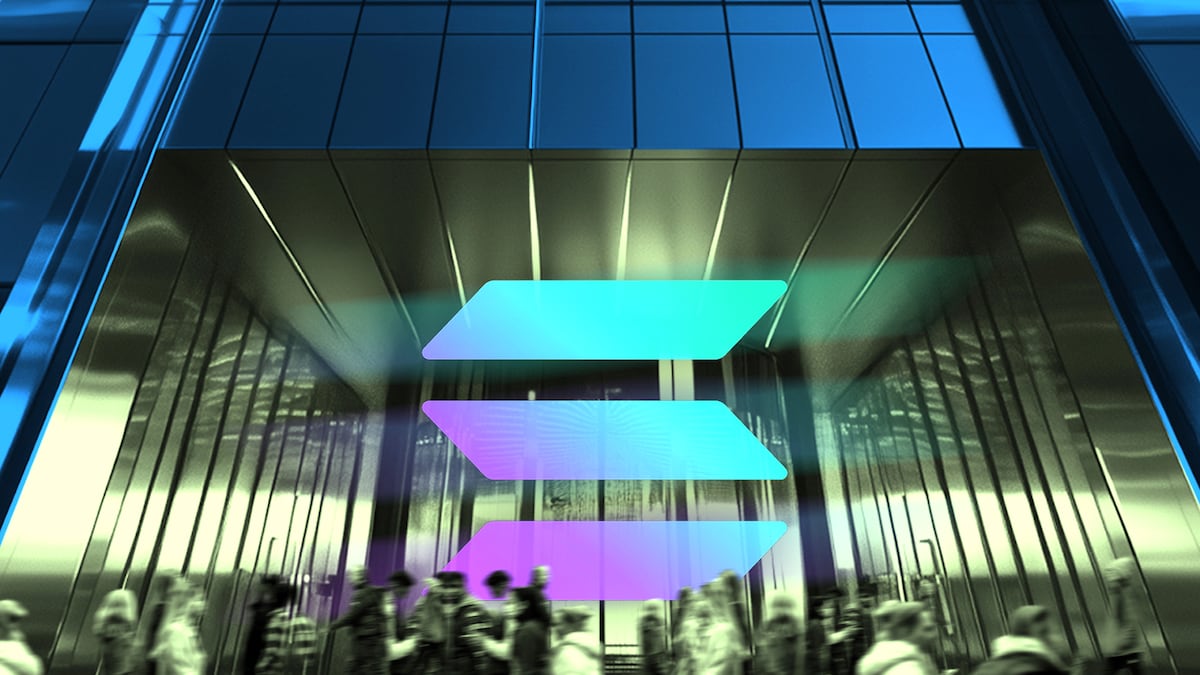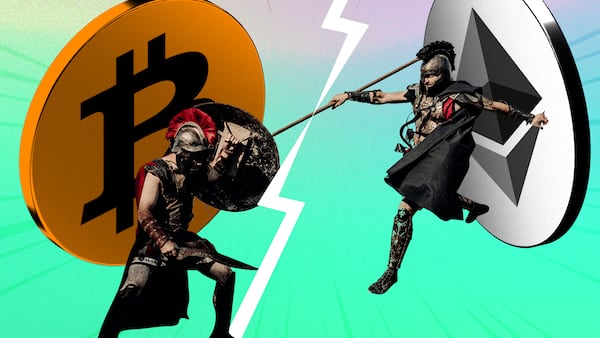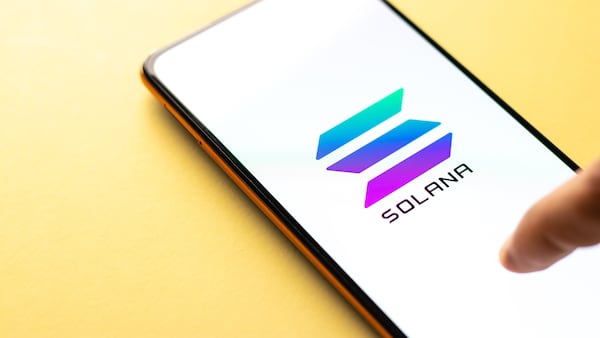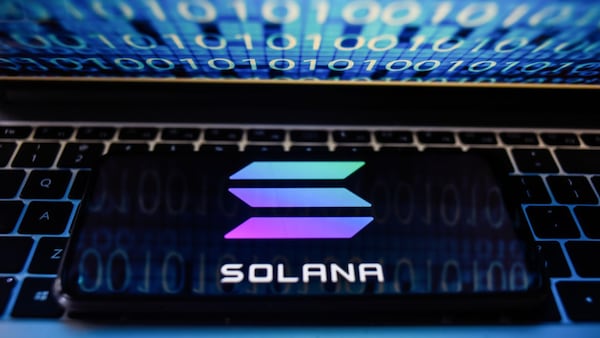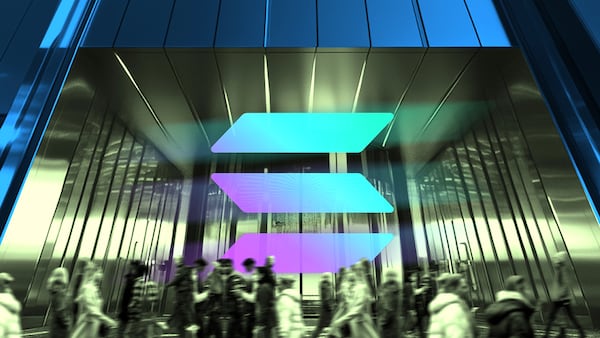- Solana ETPs debuted in the US this week.
- A grayscale executive expects them to perform like Bitcoin and Ethereum products that launched last year, gobbling up more than 5% of the token’s total supply.
- But they will face challenges that predecessors did not have to worry about.
Two Solana exchange-traded funds entered a crowded market this week. And it’s only going to get more competitive, with dozens of other crypto-based funds poised to win regulatory approval.
Still, Grayscale executive Zach Pandl says spot Solana products could see the same success enjoyed by Bitcoin and Ethereum, the first two cryptocurrencies to be repackaged for the millions of investors who are wary of investing directly in digital assets.
“It’s reasonable to benchmark [Solana] to the other ETP products that we have in the market,” Pandl, Grayscale’s head of research, told DL News.
“Over a, say, one- to two-year period, seeing at least 5% of the underlying [Solana] token held in these ETP structures would be my expectation.”
At Thursday’s prices, that would mean more than $5 billion in Solana tokens could be swallowed by firms like Grayscale and Bitwise.
Both launched Solana ETPs this week. Bitwise’s BSOL debuted on Tuesday and saw $129 million in inflows over its first two days, according to Bloomberg ETF analyst Eric Balchunas.
Grayscale’s GSOL, which launched Wednesday, saw $4 million in inflows on its first day.
“Healthy but [obviously] short of BSOL,” Balchunas wrote on X. “Being just one day behind is actually really huge. Makes it so much harder.”
‘Hands off approach’
Crypto ETFs offer US investors exposure to crypto assets in a familiar format, allowing them to invest via brokerage and retirement accounts. They are a sub-category of so-called exchange-traded products.
US-based ETFs held more than $10 trillion in assets and accounted for 26% of assets managed by investment companies by the end of 2024, according to the Investment Company Institute, a trade association.
Some large asset managers remain skeptical.
“Despite the SEC allowing trading of some crypto ETPs, cryptocurrencies themselves remain lightly regulated compared with the US stock market,” Charles Schwab warned on Wednesday.
“The SEC has signaled a hands-off approach, meaning there’s heightened risk for investors in crypto ETPs and other investment products.”
Still, Bitcoin and Ethereum ETPs have seen remarkable success since their debut last year. As of Thursday, they held $149 billion and $26 billion in assets, respectively, across 20 funds.
Like Grayscale’s Bitcoin and Ethereum ETFs, GSOL began as a trust — a closed investment vehicle that would sometimes trade above and below the value of the underlying crypto.
Converting a trust into an ETF, as Grayscale did for GSOL on Wednesday, allows investors to move in and out without having to find buyers or sellers on secondary markets. That means the product can trade at par with the underlying crypto.
GSOL launched in 2021. On the eve of its conversion to an ETF, it held $100 million in Solana tokens.
Diversified portfolios
That investment vehicle will now be available to a much broader range of investors, Pandl said. While he expects GSOL and competitors to grow into multi-billion dollar businesses, they will face challenges that Bitcoin and Ethereum ETFs did not when they made their debut last year.
“When the Bitcoin ETPs came to market, there were no other spot crypto investment vehicles available at that time,” he said.
Now, in addition to Bitcoin, Solana, and Ethereum ETFs, about a dozen more are expected to come to market. Just this week, ETPs for Hedera and Litecoin tokens launched, though they have seen relatively muted inflows.
“Certain investors will be interested in each of those single token ETP products, but we expect many investors to prefer diversified crypto ETP products,” Pandl said. “They provide exposure to the asset class while reducing the complexity to a degree — reducing the need to analyse and evaluate each and every one of these tokens.”
Staking benefits
Solana ETFs do have one advantage over their Bitcoin competitors: they allow staking, in which an investor can lock away their tokens in order to contribute to the security of the Solana blockchain. In turn, those tokens generate yield, which was about 5.7% annualised on Thursday, according to data from Solana Compass.
Bitcoin, a proof-of-work blockchain, does not feature staking, instead relying on mining for security.
GSOL will pass 77% of staking rewards to its investors, though that figure is subject to change over time, Pandl said.
“It’s a game changer for demand for crypto assets,” he said of staking. “Staking rewards are a truly unique source of income stream for investors, a way to diversify their sources of income in a portfolio.”
But some Ethereum ETFs — including Grayscale’s ETHE — also offer staking. Still, Solana ETFs have “a role in a balanced crypto portfolio,” according to Pandl.
“As it relates to smart contract platforms like Ethereum and Solana, it’s really about technological adoption around stablecoins and tokenised assets … that’s first and foremost how institutional investors are coming at the asset class,” he said.
“They are sufficiently different in their design choices that I do think that they have distinct lanes, and investors can benefit from some diversification even within this category.”
Aleks Gilbert is DL News’ New York-based DeFi correspondent. Got a tip? Email at aleks@dlnews.com.


